- Botanical Description
- Chemical Composition
- Therapeutic Properties
- Workpiece
- Ways of Application
- Precautions
A creeper is a perennial plant that is the most famous member of the genus Pyrite of the Myrtle( or Cereal) family. Especially well it is familiar to people who have summer cottages, gardeners and truck farmers as a malicious weed growing everywhere. Like some other weeds( for example, dandelion, burdock, pine, psyllium), couch grass has medicinal properties, known since the days of Ancient Greece and Rome. As a medicinal raw material, rhizome and less often the leaves of the plant are used. They have a diuretic, anti-inflammatory, diaphoretic, expectorant and laxative effect. You can meet cowering creeping in many countries of Asia, North Africa and Europe, with the exception of desert and dark areas. Among other names of the plant are known: anther, wolf tooth, dog grass, rye, zhitnyak, fire fields.
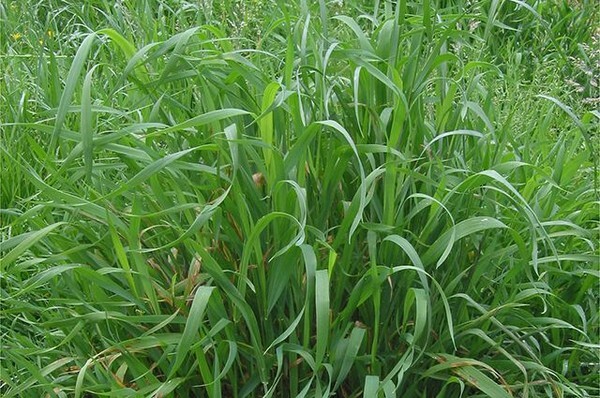
Botanical description of
The creeper is an unpretentious herbaceous plant that occurs in orchards, vegetable gardens, wastelands, meadows, fields, forest clearings and fringes, under fences, near roads. It is easily multiplied by rhizomes and seeds. Even from a very small fragment of the rhizome, which has at least one living kidney, a new plant grows.
Interesting: Poultry is a hard-toothed weed, representing a big problem for vegetable gardens and farmland. Only 10 plants per 1 m2 of land sown with wheat can reduce the yield of this crop by an average of 500 kg per hectare, which is due to the active absorption of weed and nutrients from the soil by the weed.
Common piles have a long( up to 15 m) creeping, cord-like rhizome horizontally located under the ground at a depth of 5 - 20 cm, depending on the type of soil, with numerous accessory roots and branchings. The tops of its branches bend upwards and reach the surface of the soil, forming new individuals. Despite the fact that the rhizome is rather thin, it is distinguished by its high strength and rapid growth. It can permeate boards up to 3 cm thick and potato tubers. Young roots of wheatgrass have a white color, and the old ones are yellow-brown.
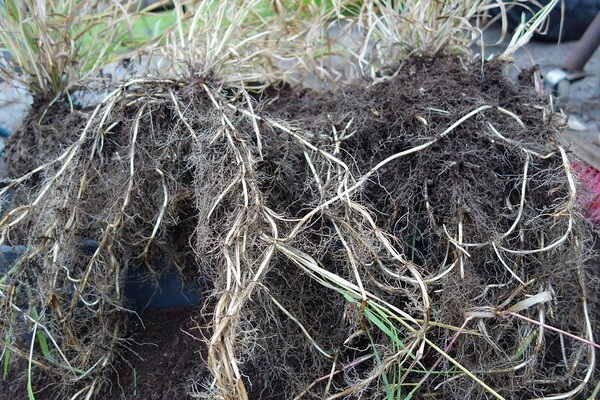
Stems of the plant rising, reaching a height of 20 cm to 1.5 m( average 60 - 100 cm).Outside they are bare, without pubescence, inside are hollow.
Another sheet. The leaf blade is flat, with parallel venation, narrowly linear, 15-40 cm long and 1 cm wide, with a roughen on the upper side. The leaves are painted green or bluish-green, grow vertically from the root, partially covering the base of the stem and forming a leaf sheath.
Creeper blossom propagation occurs from May to July. The flowers are small, unattractive, yellow-green, located on the tops of the stems, collected 4 to 10 pieces per spikelet, forming an inflorescence of a complex ear 10-30 cm in length. Each flower has 3 stamens and 1 pestle.
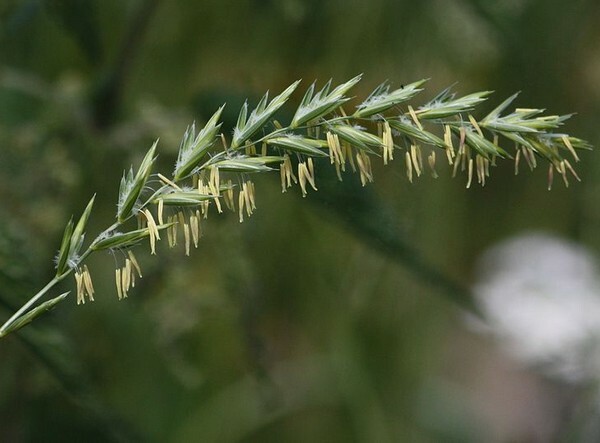
Fruits ripen from August to September, are fleecy hairy grains up to 1 cm long, encased in fused flower scales. Each seed contains one seed.
Chemical Composition
For medicinal purposes, rhizomes and grass are used, which is due to the high content of various useful compounds in these parts of the plant. Among them:
- fatty and essential oils;
- silicic and organic acids( lactic, apple);
- mono- and polysaccharides( levulose, fructose, starch, inulin, cellulose, pectins);
- gums and mucus;
- glycosides;
- saponins;
- vitamins( carotene, ascorbic acid, inositol);
- proteins and amino acids;
- minerals( K, Mg, Fe, Mn, Na, Ca, Zn).
Therapeutic properties of
The wide application in folk medicine is due to the detection of the creeping creeping of the following courageous properties in couch grass:
- is an anti-inflammatory;
- diaphoretic;
- expectorant;
- is a bile and diuretic;
- antiseptic;
- is enveloping;
- hemostatic and wound healing;
- toning;
- is an analgesic;
- is a laxative.
Diuretic and anti-inflammatory effect of the plant allows it to be used successfully in dropsy, edema of various etiologies, urolithiasis and inflammatory processes of the urinary system( nephritis, cystitis, urethritis).The puffy creeper helps with cholelithiasis, pathologies of the biliary tract and gallbladder, liver diseases( hepatitis, cirrhosis, fatty degeneration) and inflammatory diseases of the digestive system such as gastritis, colitis, enteritis. It increases appetite, restores metabolism, normalizes intestinal activity and is effective for constipation.
As a diaphoretic, restorative, nutritional and restorative force, the wheatgrass is used for anemia, colds, fever. Thanks to the expectorant effect, its decoctions and infusions facilitate coughing and increase sputum discharge on coughing, acute and chronic bronchitis, tuberculosis.
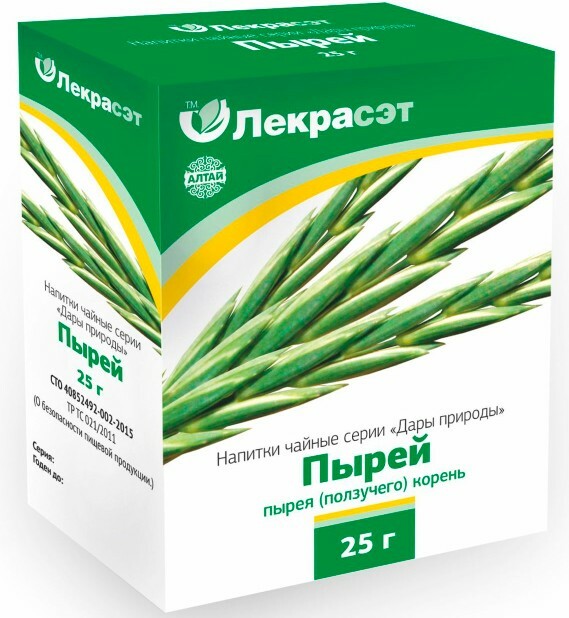
The root of wheatgrass has medicinal properties in relation to the cardiovascular system, it promotes blood purification, lowers cholesterol, strengthens blood vessels and increases the elasticity of the capillary walls. In this regard, the funds on its basis will be especially useful for the elderly.
Inside and outwardly in the form of lotions, compresses and baths, the means of wheatgrass is used as an anesthetic and anti-inflammatory for rheumatism, radiculitis, gout, joint diseases, osteochondrosis. With topical application of infusions of rhizomes, plants are effective in the form of lotions and rubs in skin diseases, furuncles, eczema, dermatitis, acne and in the form of sedentary baths and enemas with hemorrhoids and inflammatory processes in the rectum.
Interestingly: The popular name for "dog grass" wheat grass was received due to the fact that it is very willing to eat cats and dogs, especially those who are sick or lack vitamins, living in an apartment.
Procurement of
In summer, fresh rhizomes can be used for the preparation of medicines, and dried for the rest of the year.
Harvesting of rhizomes of creeping grass is performed in autumn or early spring. They are extracted from the ground, shaken from the remains of the soil, cleaned of small roots, stems and foreign impurities, then washed with cool water. Prepared rhizomes are dried by spreading a thin layer in fresh air, in the sun, preferably in windy weather, or in a dryer at a temperature of no higher than 60 ° C.In the drying process, the rhizomes are periodically inverted. The degree of availability of raw materials is determined by the bending of the rhizomes. They should easily fold at an acute angle, and not bend.
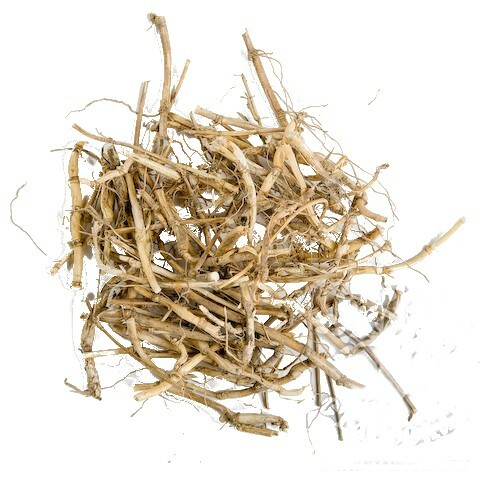
The dried raw material has a sweetish taste. Store it in tissue pouches or wooden boxes in a dark and dry place for no more than 2 years.
Ways of using
In folk medicine, rhizomes and grass grass are used in the form of broths, infusions and freshly squeezed juice. Use these funds should be before eating. The plant is added to a variety of herbal preparations and teas, which you can prepare yourself or buy at a pharmacy.
In addition to therapeutic use, some people use this plant in cooking. From the crushed rhizomes make flour for baking bread, flat cakes, gingerbread or beer, and cereals for cereals. Cut fresh or boiled rhizomes are added to salads, soups, casseroles, fish and meat dishes.
Decoction for hemorrhoids, constipation, inflammation of the rectum and sigmoid colon
Chopped rhizome in the amount of 2 tsp.pour a glass of boiling water, boil for 5 - 7 minutes at minimum heat and insist an hour. The resulting broth is used before bedtime in the form of a microclyster of 30-60 ml or ingested, previously diluted with boiled water 10 times, 30 ml three times a day.Means for skin diseases
The rhizomes of wheatgrass and burdock( 100 g each) are placed in enameled utensils of large size and pour 4 to 5 liters of hot water. They boil for 10 minutes. The broth is cooled, filtered and poured into a recruited bath with a water temperature of 36-37 ° C.Take such a bath 30 minutes once a week.
In parallel with the baths, use a decoction, prepared from 1 tbsp.l.rhizomes and 200 ml water as described above.
Infusion for gout, joint diseases, osteochondrosis
The rhizome of the plant( 2 tablespoons) is ground, pour ½ liter of boiling water and insist 10-12 hours in a tightly closed container. Filter and take half the glass three times a day. Prepare this infusion better in the evening so that during the night it is infused.
Grass grass grass with cholelithiasis
Grass with pieces of rhizomes are washed in running cold water, cut into pieces, doused with boiling water and grinded in a meat grinder. The resulting mass is half diluted with water, squeezed through a dense tissue and boiled for three minutes. Take 15 - 30 ml three times a day. Store the product in the refrigerator for up to two days.
Broth for diseases of the urinary system
Dried crushed rhizomes( 2 tablespoons) are poured into 200 ml of water, boiled for 10 minutes, covered with a lid. Insist 4 hours and filter. Take 15 ml three times a day.
Precautions
The wide use of the plant in folk medicine is due to its accessibility, as well as the fact that along with the valuable curative properties of crocheting creeping, there are very few contraindications to its use. Means from it can not be used by children under 2 years, nursing and pregnant women, people with individual intolerance or allergy to this plant.
Warning: In case of an overdose of cattail grass, pain can occur in the area of the kidneys, diarrhea, oppression. If these symptoms appear, you should stop taking the medication immediately.
Therapeutic properties, workpiece and methods of application of crochet fork:
